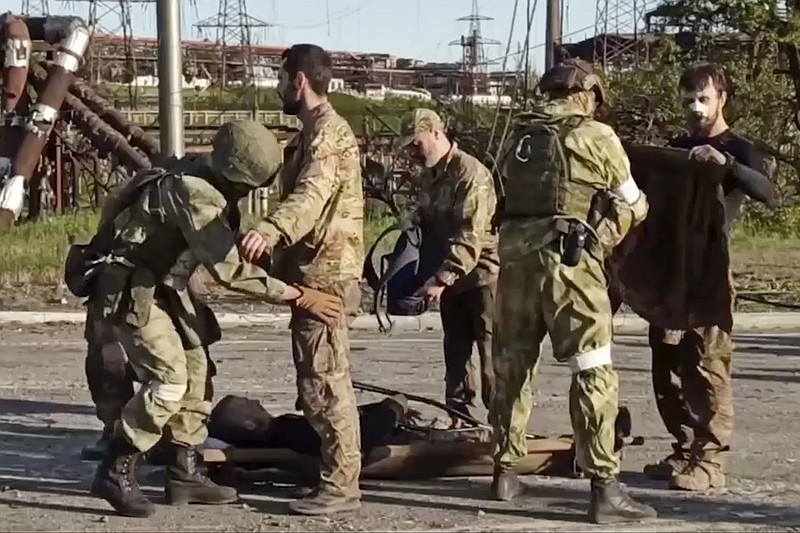By OLEKSANDR STASHEVSKYI and CIARAN McQUILLAN
Associated Press
KYIV, Ukraine (AP) -- Mariupol appeared on the verge of falling to the Russians on Tuesday as Ukraine moved to abandon the steel plant where hundreds of its fighters had held out for months under relentless bombardment in the last bastion of resistance in the devastated city.
The capture of Mariupol would make it the biggest city to be taken by Moscow's forces in the war yet and would give the Kremlin a badly needed victory, though the landscape has largely been reduced to rubble.
More than 260 Ukrainian fighters -- some of them seriously wounded and taken out on stretchers -- left the ruins of the Azovstal plant on Monday and turned themselves over to the Russian side in a deal negotiated by the warring parties. Ukrainian authorities said they were working to extract the remaining soldiers from the sprawling steel mill. They would not say how many were still there.
The operation to abandon the steel plant signaled the beginning of the end of a nearly three-month siege that turned Mariupol into a worldwide symbol of both defiance and suffering.
The Russian bombardment killed over 20,000 civilians, according to the Ukrainian side, and left the remaining inhabitants -- perhaps one-quarter of the southern port city's prewar population of 430,000 -- with little food, water, heat or medicine.
During the siege, Russian forces launched lethal airstrikes on a maternity hospital and a theater where civilians had taken shelter. Close to 600 people may have been killed at the theater.
Gaining full control of Mariupol would give Russia an unbroken land bridge to the Crimean Peninsula, which it seized from Ukraine in 2014, and deprive Ukraine of a vital port. It could also free up Russian forces to fight elsewhere in the Donbas, the eastern industrial heartland that the Kremlin is bent on capturing.
Over the past few days, Sweden and Finland announced plans to apply for NATO membership, and Ukraine reported that Moscow's forces had retreated from around the northeastern city of Kharkiv in the face of counterattacks and had taken heavy losses in an Ukrainian assault on a pontoon bridge in the Donbas.
The soldiers who left the plant were given pat-down searches, loaded onto buses accompanied by Russian military vehicles, and taken to two towns controlled by Moscow-backed separatists. More than 50 of the fighters were seriously wounded, according to both sides.
Russia's main federal investigative body said it intends to interrogate the troops to "identify the nationalists" and determine whether they were involved in crimes against civilians. Also, Russia's top prosecutor asked the country's Supreme Court to designate Ukraine's Azov Regiment, whose members have been holding out at Azovstal, a terrorist organization. The regiment has links to the far right.
In other developments, the chief prosecutor for the International Criminal Court prosecutor, Karim Khan, said he sent a team of 42 investigators, forensic experts and support personnel to Ukraine to look into suspected war crimes. Ukraine has accused Russian forces of torturing and killing civilians.
The World Health Organization has verified 226 attacks on health facilities in Ukraine -- almost three per day on average -- since the Russian invasion began, according to the agency's Europe director, Hans Kluge. The targeted strikes have killed at least 75 people and wounded 59, he said.

